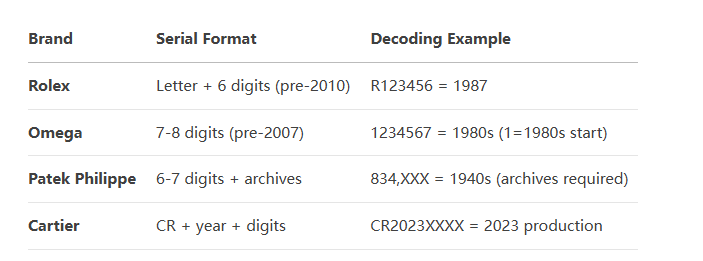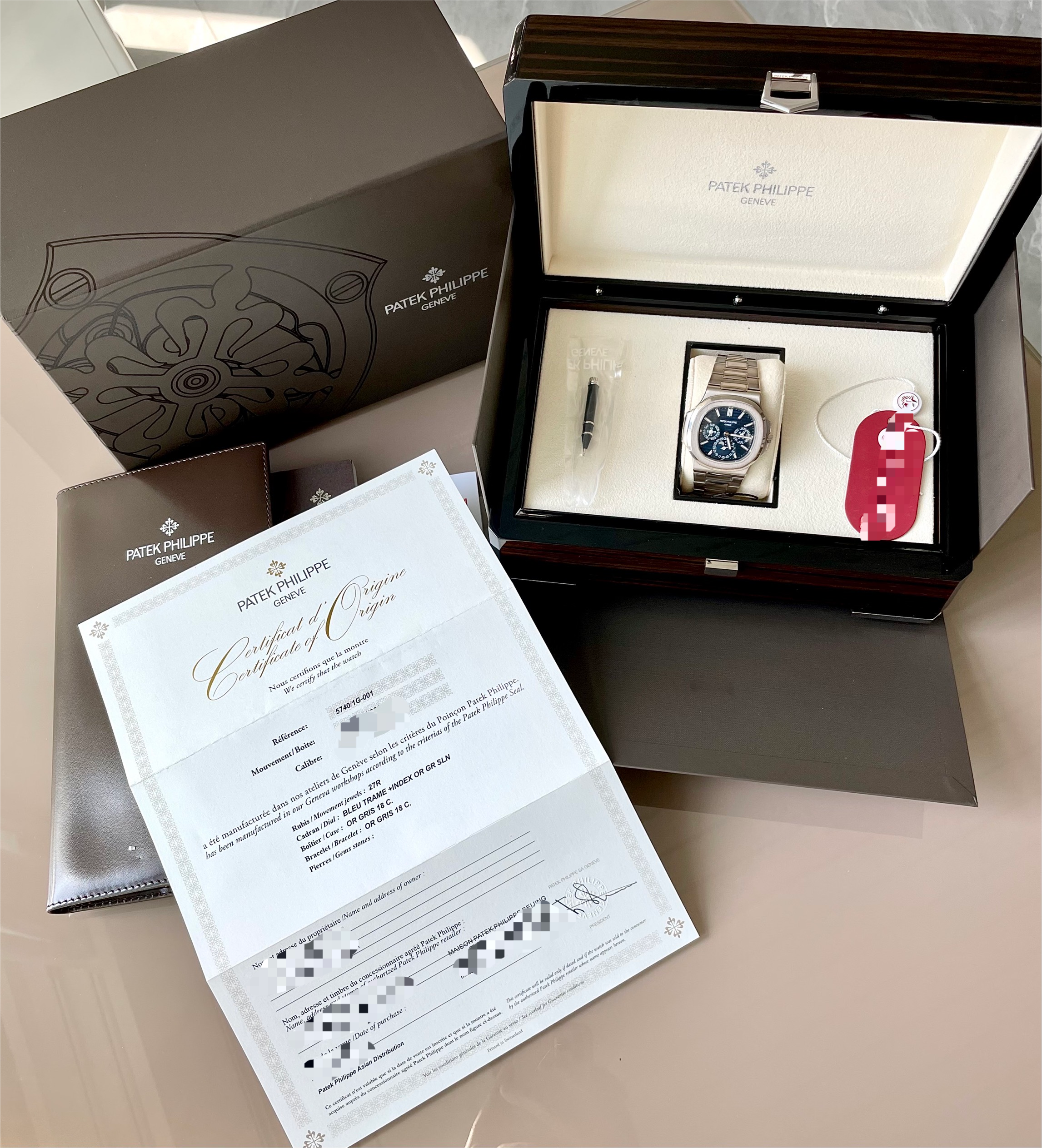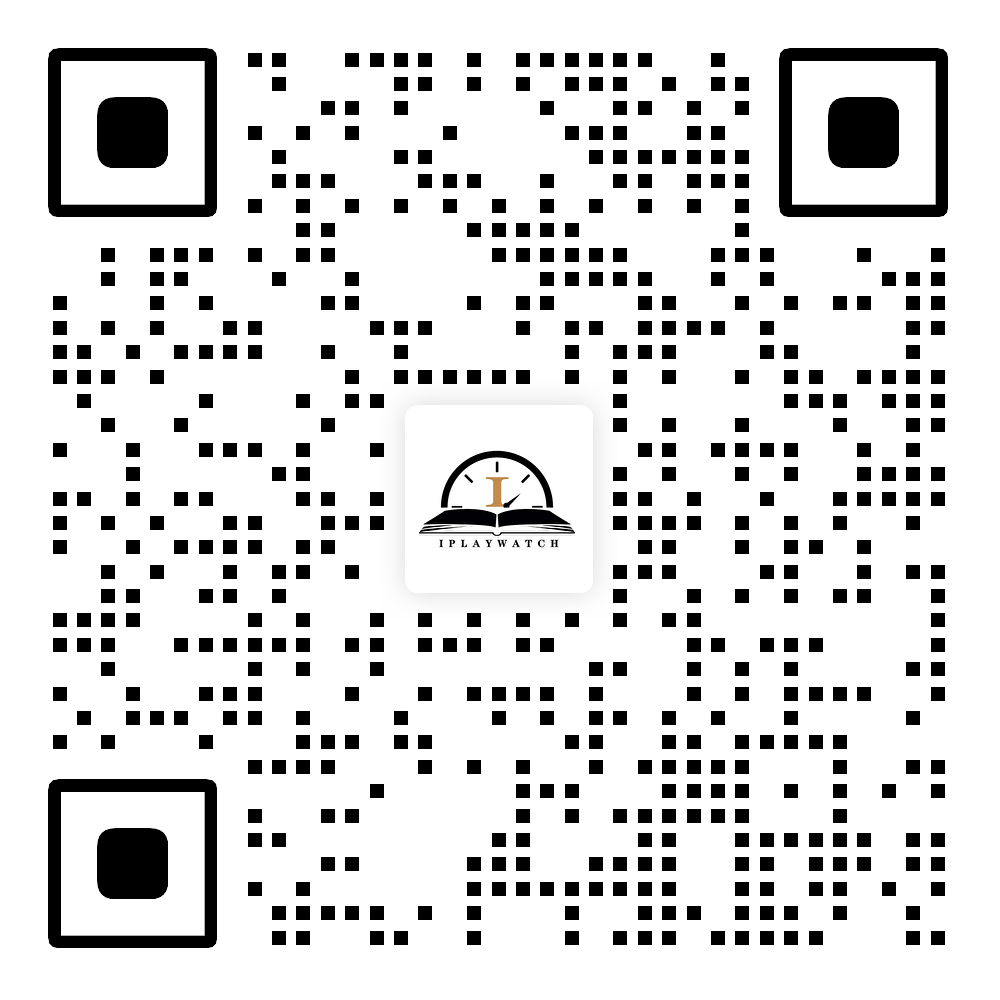How to Authenticate Luxury Watches Using Serial Numbers: A Guide for New Collectors
Watch Guides
2025-04-30How to Authenticate Luxury Watches Using Serial Numbers: A Guide for New Collectors
Learn how to authenticate luxury watches using serial numbers. Discover brand-specific locations, decoding tips, and expert tools to avoid fakes. Perfect for new collectors!
- Why Serial Numbers Are Your First Defense Against Fakes
For new luxury watch collectors, verifying authenticity is non-negotiable. Over 40% of pre-owned luxury watches listed online have authenticity issues, according to a 2023 Watch Fraud Report. Serial numbers act as a watch’s DNA—unique, traceable, and often the quickest way to spot counterfeits. In this guide, we’ll break down:
- Key serial number locations for Rolex, Omega, Patek Philippe, and more.
Step 1: Locate the Serial Number (Brand-by-Brand Guide)
Serial numbers are hidden in brand-specific spots. Here’s where to look:
- Rolex
Modern Models (Post-2005): Between the lugs at 6 o’clock (remove bracelet).
Example: Submariner Ref. 126610 ➔ "D320T2" engraved with Rolex’s block font.
Vintage Models (Pre-1980s): Inside the case back or on the movement.
- Omega
Speedmaster Moonwatch: Laser-etched on the case back (8 digits) + movement engraving.
1950s Seamaster: Inside the case back (e.g., "14M PC" = 1964, 9th month).
- Patek Philippe
Nautilus Ref. 5711: Between 6 o’clock lugs (e.g., "4XXXXXX" = 21st century).
Calatrava Ref. 96: Case back edge (e.g., "834,XXX" = 1940s).
- Audemars Piguet Royal Oak
Case back outer ring (e.g., "A1234B" ➔ A=2010, B=2011).
Pro Tip: Use a 10x loupe—authentic engravings are crisp and evenly spaced; fakes often show laser-blurred edges.
Step 2: Decode the Serial Number
Each brand uses a unique coding system:

Step 3: Cross-Check with Official Sources
Never rely solely on serial numbers. Combine these methods:
1. Brand Archives
Rolex: Visit an authorized dealer (AD) for verification
Omega: Use their Vintage Database for pre-1990 models.
Patek Philippe: Pay $300 for an Extract from the Archives.
2. Third-Party Tools
WatchRegister: Free global stolen watch database.
Loupe This App: AI-powered engraving analysis.
3. Physical Authentication
Case Polishing: Over-polishing erodes serial numbers (common in refurbished fakes).
Movement Matching: Open the case back to confirm the movement’s serial matches the paperwork.
Incorrect Placement: A "vintage Rolex" with a serial on the case back (should be between lugs).
Mismatched Fonts: Rolex uses a distinct block font; fakes often use generic sans-serif.
Duplicate Numbers: Search platforms like WatchRegistry for duplicate entries.
Modern Format on Vintage Models: A 1950s Omega with a 12-digit laser engraving.
No Documentation: Missing warranty cards or service records.
Red Flags:
Laser-etched (vs. Rolex’s hand-stamped engravings).
Case lugs over-polished, blurring the serial.
Movement stamped "1995" (decades after production).
Result: The watch was confirmed fake by a Rolex AD.
- FAQ: New Collectors’ Top Questions
Q: Can serial numbers be faked?
A: Yes, but poorly. Use multi-point verification (font, placement, archives).
Q: Should I open the case back myself?
A: No—visit a certified watchmaker to avoid damage.
Q: Which brands have free serial checks?
A: Breitling offers a serial lookup tool.
Q: Do quartz watches have serial numbers?
A: Yes, but vintage quartz models (e.g., Omega Constellation Quartz) often lack documentation.
- Conclusion: Serial Numbers Are Just the Start
While serial numbers are critical, authentication requires a 360° approach: paperwork checks, physical inspection, and expert verification.

If you’re ever in doubt, take the watch to a professional for authentication. It’s worth the extra effort to ensure you’re getting the real deal.

